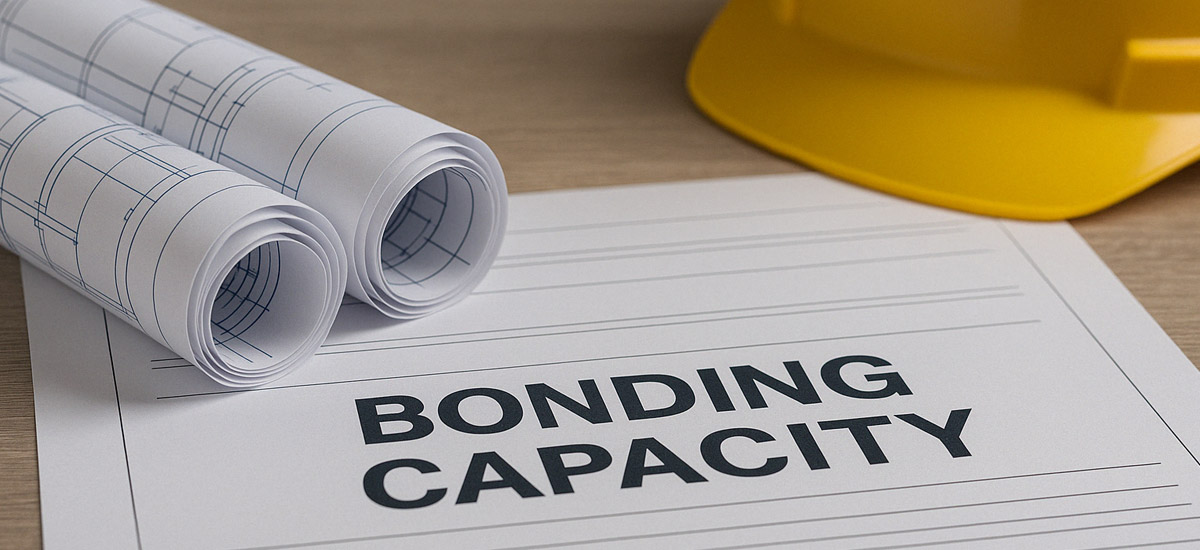In an effort to modernize and streamline surety bond agreements, the Canadian Construction Documents Committee (CCDC) has introduced updated wordings for Bid Bonds, Performance Bonds, and Labour & Material Payment Bonds.
These updates mark the first significant revisions since 2002 and reflect the evolving needs of the construction industry in Canada. As a leading surety bond brokerage, Bond Connect is committed to helping clients navigate these changes and understand their implications.
An Overview of the Bond Wording Changes
Bid Bond (CCDC 220-2024 vs. CCDC 220-2002)
The Bid Bond ensures that if the principal (bidder) is awarded the contract, they will enter into the agreement and furnish the required performance and payment bonds. Key changes include:
- Bond Amount: The new template specifies “Ten Percent Of Tender” directly within the document, ensuring clarity on the financial obligation.
- Validity Period: The Validity Period is now explicitly defined as sixty (60) calendar days from the bid closing date, with the possibility of extending by up to sixty (60) days without notifying the Surety.
- Obligation Clause: The new template simplifies the conditions under which the bond is void, focusing on the acceptance of the bid and the provision of subsequent bonds.
- Suit Period: The seven-month period for commencing legal action remains unchanged, ensuring continuity for stakeholders.

Performance Bond (CCDC 221-2024 vs. CCDC 221-2002)
The Performance Bond guarantees the faithful performance of the contract by the principal. Notable updates include:
- Detailed Default Procedures: The updated bond outlines specific steps for the Surety upon receiving a Notice of Default, including a Pre-Notice Meeting, Surety’s Investigation, and Post-Notice Conference. These additions aim to foster communication and mitigate disputes early in the process.
- Interim Work Provisions: New provisions allow the Obligee to undertake necessary interim work to ensure safety and compliance, with costs potentially reimbursed by the Surety.
- Obligee’s Direct Expenses: Clearly defines reimbursable expenses incurred by the Obligee due to the Principal’s default, such as professional fees and costs of interim work.
- Liability Limitations: Clarifications on the Surety’s liability limit, emphasizing that the Surety’s responsibility is secondary to the Principal’s and does not exceed the Bond Amount.
- Action Limitation: Maintains the two-year limitation period for initiating suits, aligning with standard legal practices.
Have Questions for a Surety bond Expert?
Labour & Material Payment Bond (CCDC 222-2024 vs. CCDC 222-2002)
This bond ensures payment for labor and materials provided for the project. Key enhancements include:
- Claimant Definition: The bond explicitly defines a “Claimant” and clarifies the inclusion of rental equipment as part of the covered materials.
- Notice and Claim Procedures: Updated procedures for submitting claims, including a 120-day notice period for both holdback and other claims, and a detailed schedule for the Surety’s acknowledgment and response.
- Trust Provisions: Reinforces the Obligee’s role as a trustee for Claimants, ensuring that funds are appropriately managed and disbursed.
- Legal Framework: Stipulates that claims must be made in the jurisdiction where the work is performed, providing clarity on legal proceedings.
- Subrogation Rights: Enhanced language on the Surety’s subrogation rights upon payment to a Claimant, protecting the Surety’s interests.

The Integral Role of Surety Bonds in the Construction Industry
Surety bonds are a cornerstone of the construction industry, providing a financial guarantee that contractors will fulfill their obligations. They serve as a critical risk management tool, ensuring that projects are completed on time, within budget, and according to specifications. The use of surety bonds benefits not only project owners and contractors but also taxpayers and the public.
Learn more about the Construction Bond Guarantees here.
Bonding as Protection of Taxpayer Dollars
Public projects, often funded by taxpayer dollars, require stringent safeguards to ensure the responsible use of funds. Surety bonds offer this protection by guaranteeing that contractors will perform their work as agreed. If a contractor defaults, the Surety steps in to ensure the project’s completion, protecting the public investment.
Private Owners Leveraging Surety Guarantees
For private contractors, surety bonds provide a level of assurance that can enhance their reputation and competitiveness.
By demonstrating financial stability and reliability, contractors who secure surety bonds are often more attractive to project owners. This can lead to more opportunities and larger projects, fostering business growth.
Relevance of the Canadian Construction Documents Committee (CCDC)
The CCDC, composed of industry stakeholders including owners, contractors, and surety companies, develops standard contract documents that ensure fairness and clarity in construction contracts. These documents, including the updated surety bond templates, are widely recognized and endorsed by the construction industry across Canada.
For more detailed information, the CCDC website (www.ccdc.org) provides comprehensive resources and access to the latest documents.

Q&A: Understanding the New CCDC Surety Bond Templates
Q: Why were the CCDC surety bond templates updated after so many years?
A: The updates were made to reflect the evolving needs of the construction industry and to provide clearer, more comprehensive guidelines for all parties involved. The last update was in 2002, and since then, there have been significant changes in industry practices and legal requirements.
Q: How do these changes benefit contractors and project owners?
A: The new templates offer greater clarity and detail in procedures, which helps in mitigating disputes and ensuring smoother project execution. Contractors benefit from the structured processes, while project owners gain better protection and assurance of project completion.
Q: What are the main differences in the updated Bid Bond template?
A: The updated Bid Bond template specifies the bond amount clearly as “Ten Percent Of Tender” and defines the Validity Period as sixty (60) calendar days from the bid closing date, with possible extensions. It maintains the seven-month period for commencing legal action.
Q: How do the new Performance Bond provisions help in case of a contractor default?
A: The updated Performance Bond includes detailed steps for handling defaults, such as Pre-Notice Meetings and Surety Investigations. These provisions aim to facilitate early communication and cooperation, reducing the likelihood of prolonged disputes.
Q: What should Claimants know about the updated Labour & Material Payment Bond?
A: Claimants are now provided with clearer definitions and detailed procedures for submitting claims. The updated bond outlines specific timelines and required documentation, ensuring that Claimants have a structured process for seeking payment.
Conclusion for CCDC Updates
The recent updates to the CCDC surety bond templates reflect a significant step forward in modernizing and improving construction contract management. These changes aim to enhance clarity, streamline processes, and protect all parties involved in construction projects.
At Bond Connect, we are dedicated to helping our clients understand and implement these new templates, ensuring that they are well-prepared for the evolving construction landscape.






